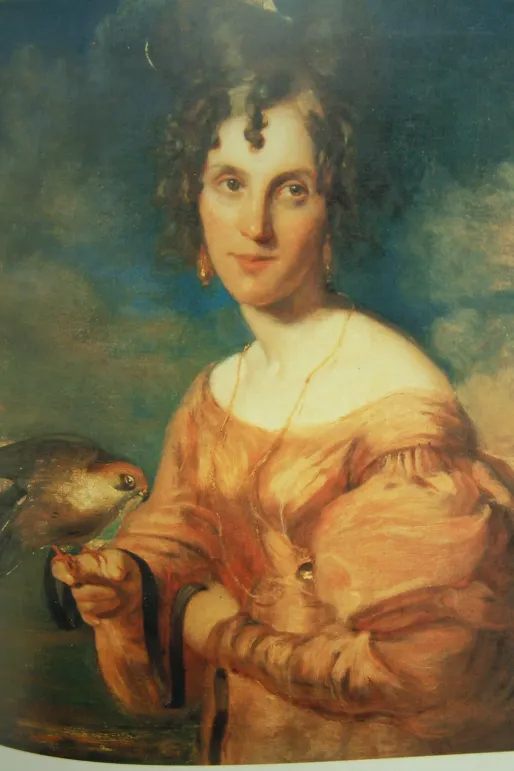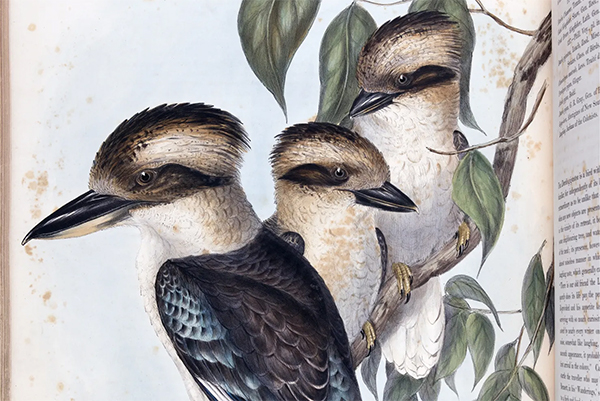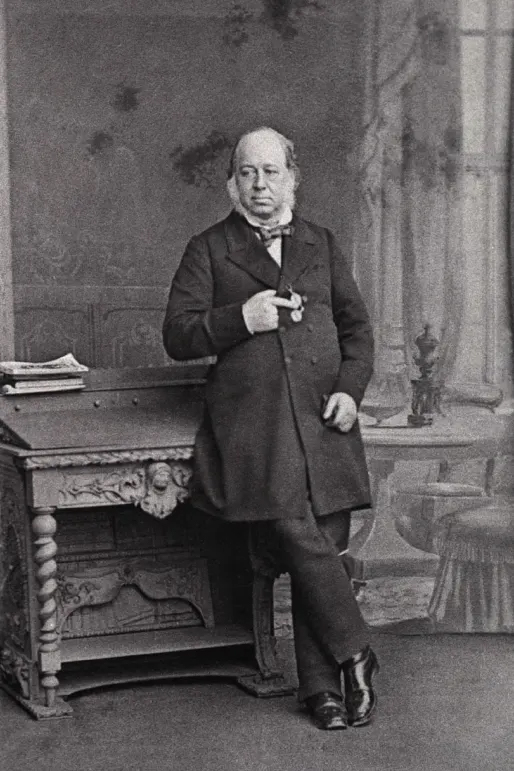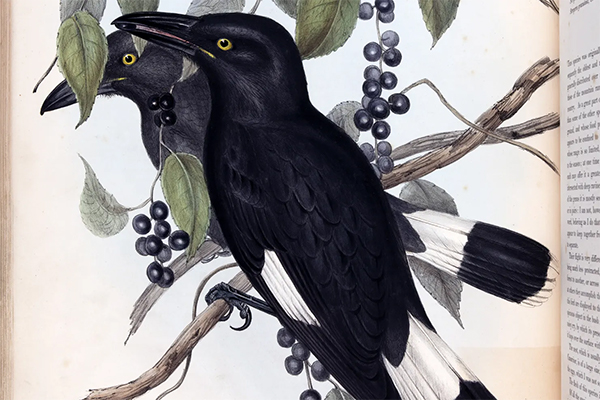Julie Power, The forgotten people behind Australia’s famous birdman John Gould, 20 March 2023
Known as the birdman, John Gould is credited with describing 328 of Australia’s 830 species of birds.
But the father of the science of ornithology may not have achieved the same fame and fortune without the help of those often relegated to footnotes in history – women and Indigenous Australians.
Dr Vanessa Finney, an archivist with the Australian Museum, said the contribution of his wife, Elizabeth, an artist, illustrator and mother to six children, and the First Nations guides, was often overlooked.
A new multimedia travelling exhibition, The Birds of Australia Storybox, debuting on Wednesday in Newcastle, will trace the footsteps of Gould and his wife Elizabeth on their birding expedition across NSW nearly 200 years ago.

It includes an interactive storytelling cube, created by ESEM Projects, that features the songs of the birds in those regions, details of which birds are vulnerable, and the significance of birds to local Indigenous groups.
The bird’s calls were changed slightly on the cube because a soundscape in a public place may have confused the birds, said Finney. But visitors can listen to the bird’s real song via a QR code or on the museum’s website.
Gould was at the forefront of evolutionary theory, and had a deep understanding of the natural world, said Finney.
“Without Elizabeth’s artistic talents, John Gould’s early publications would likely have failed,” she said.
Causing her much heartache, Elizabeth left behind three of her four young children and a sick mother in England to travel with her husband to Australia in 1838 to draw the birds he collected.
The Sydney Morning Herald soon exhorted its readers to buy Mrs Gould’s works: “Every wealthy person in the Colony, who has the slightest [claim] to be considered a man of taste, ought to subscribe … for the drawings alone, as mere works of art, apart from their scientific value, are worth treble the money asked for the whole work. ”

Gould became rich and famous from sales of his illustrated volumes, including the seven volumes of Birds of Australia featuring 600 hand-coloured plates.
“It is an irony that a man who never finished a picture is remembered as one of the most significant bird artists of the Victorian age,” says the Australian Museum’s website.

For decades before photography and talking pictures, Gould’s volumes were the only record of birds that would later prove Australia was at the centre of avian evolution.
Gould wrote eloquently about the birds and how he found them. Unusually for the time, he always included the Aboriginal name of each species.
Sometimes he described a bird’s song: A honeyeater’s was “rather remarkable: being commenced with a single note slowly drawn out and followed by a quick repetition of a double note”.
Australian Museum Chief Scientist Professor Kris Helgen said Gould’s work in identifying bird specimens collected by Darwin was crucial to the development of the British scientist’s theory of natural selection. “We know now that Australia has been an important centre of bird evolution, with songbirds tracing their ancestry back to this continent.”
“Australian birds are evolutionarily special, and they are gorgeous too. We hope that this exhibition will bring awareness to the importance of our native birds and showcase the astonishing variety, colour and complexity of Australia’s amazing bird life.”
Elizabeth missed her children in the two years she was in Australia. She wrote that Gould was so enthusiastic that “one cannot be with him without catching some of his zeal in the cause, and I cannot regret our coming though looking anxiously forward to our return”.

In 1841, a year after returning to England, Elizabeth died at age 37 after giving birth to a daughter Sarah.
Gould also used other artists to illustrate his volumes, including Edward Lear, H.C. Richter, William Hart, and Joseph Wolf.
CORRECTION
An earlier version of this story said an illustration was of magpies – this has been corrected to say they were currawongs.

